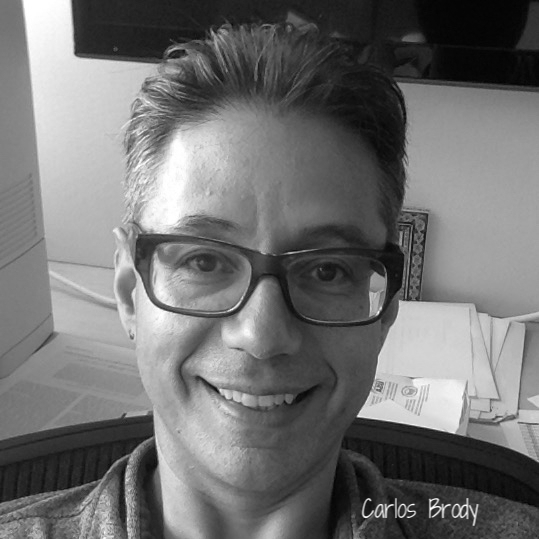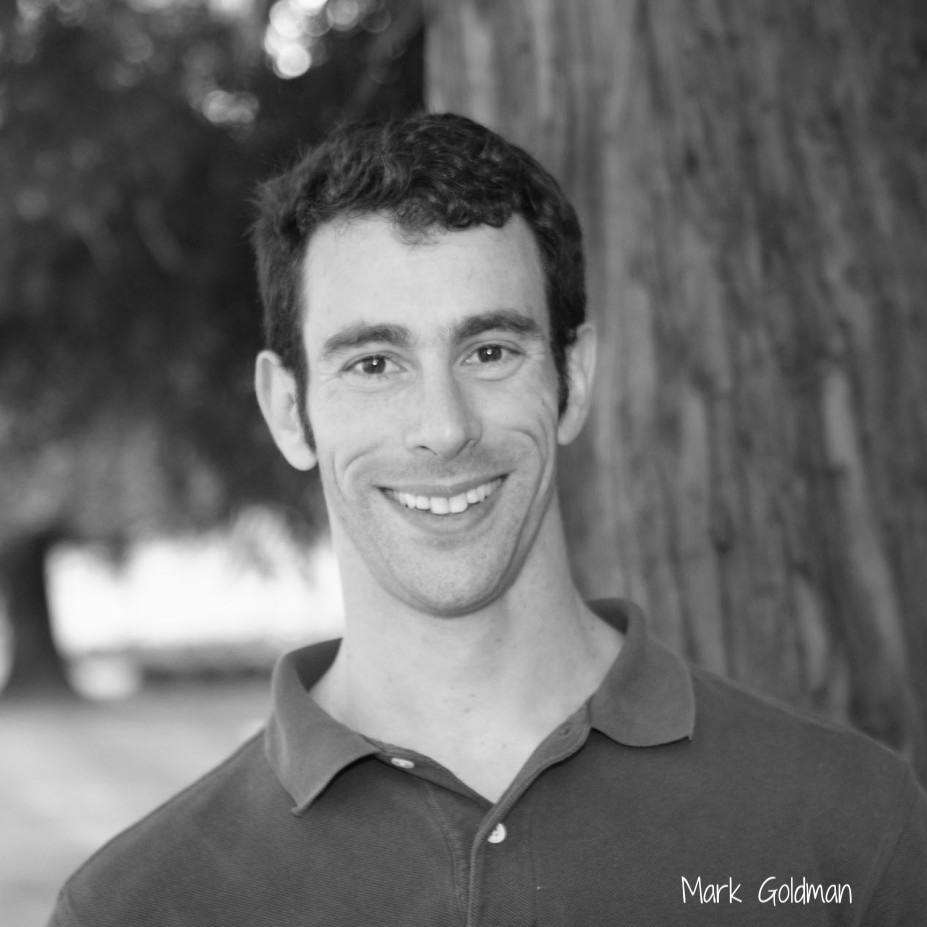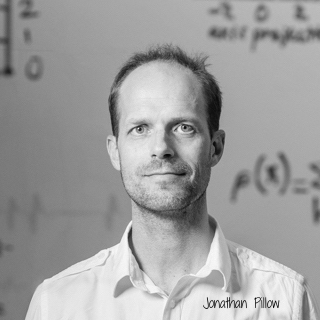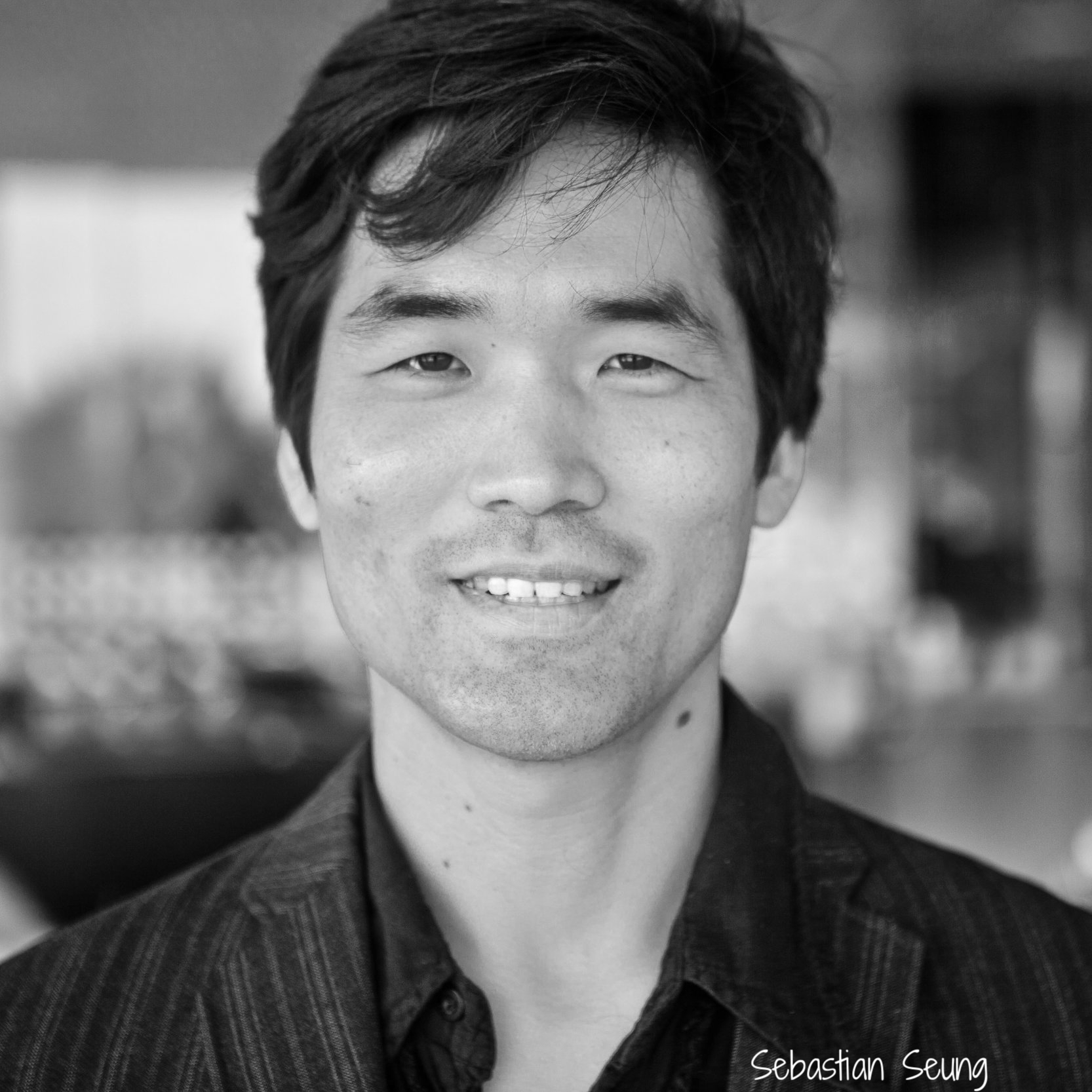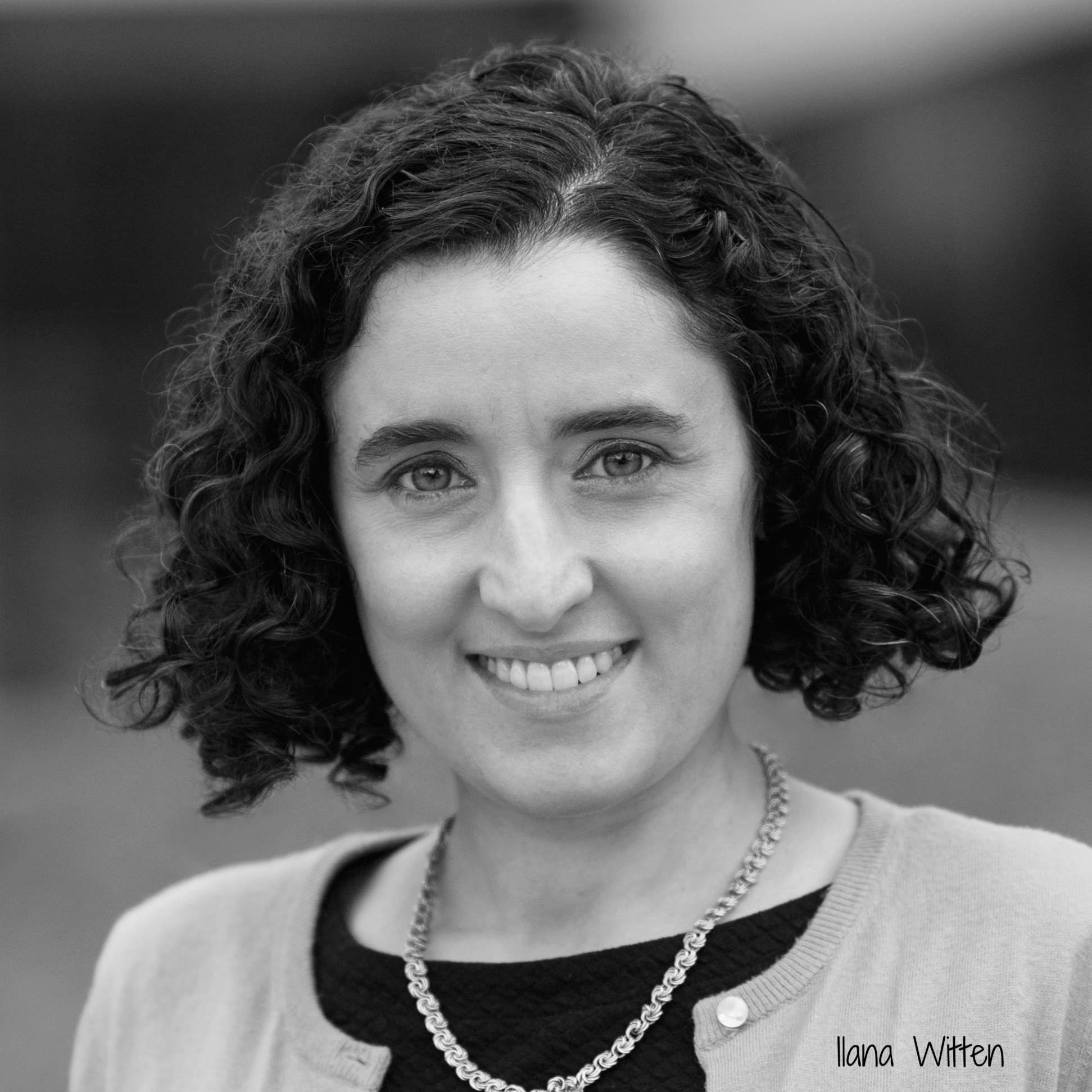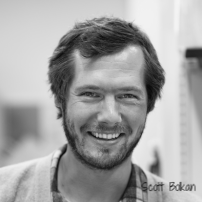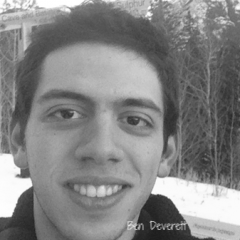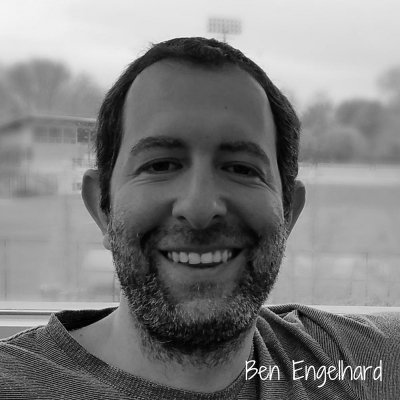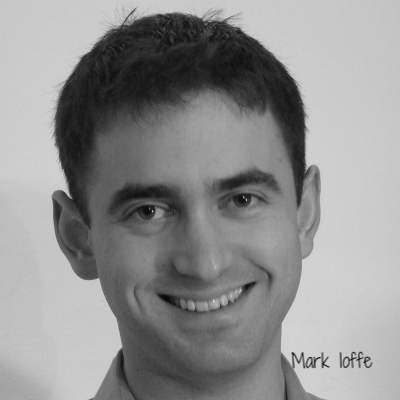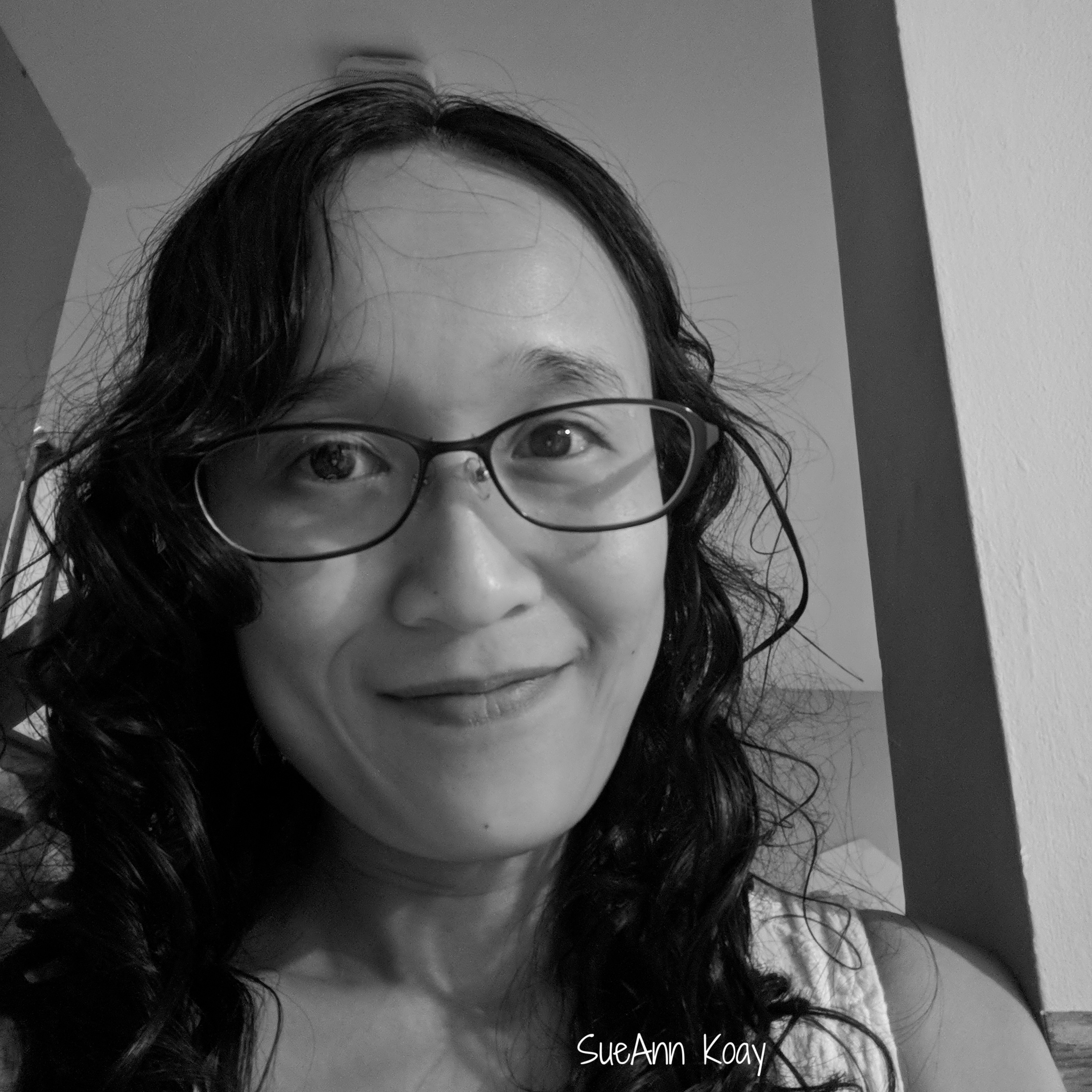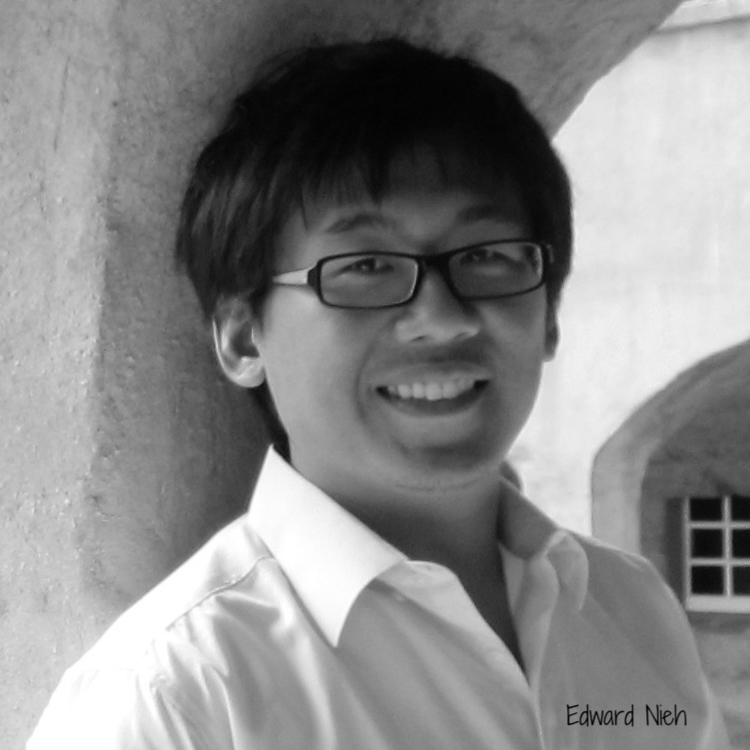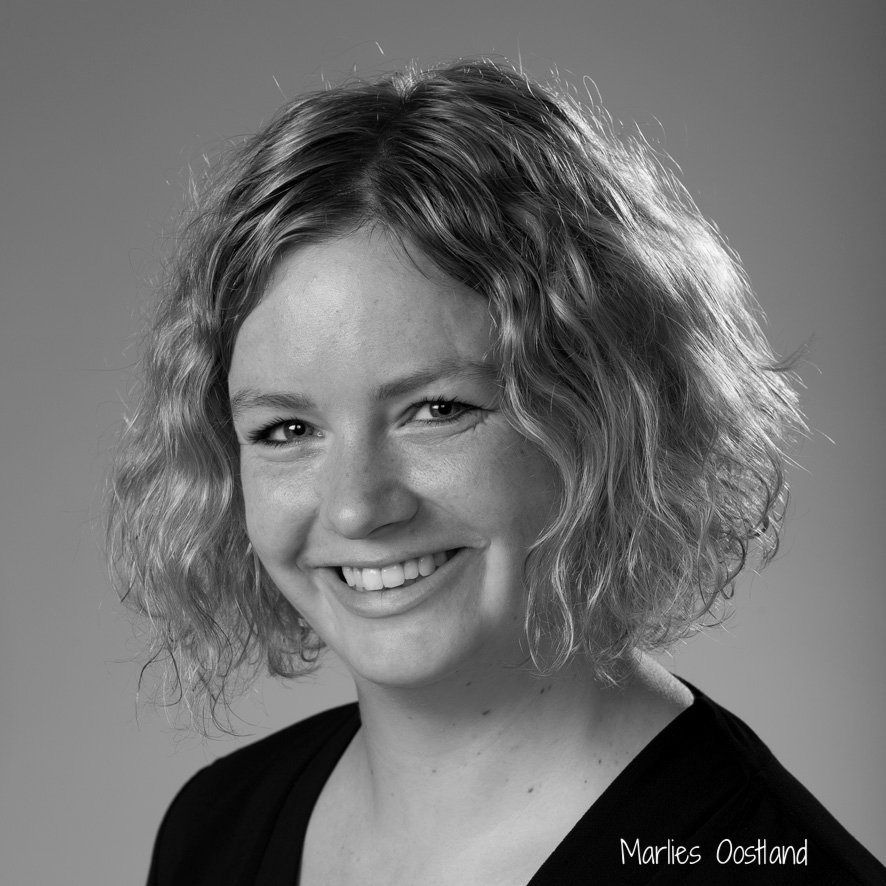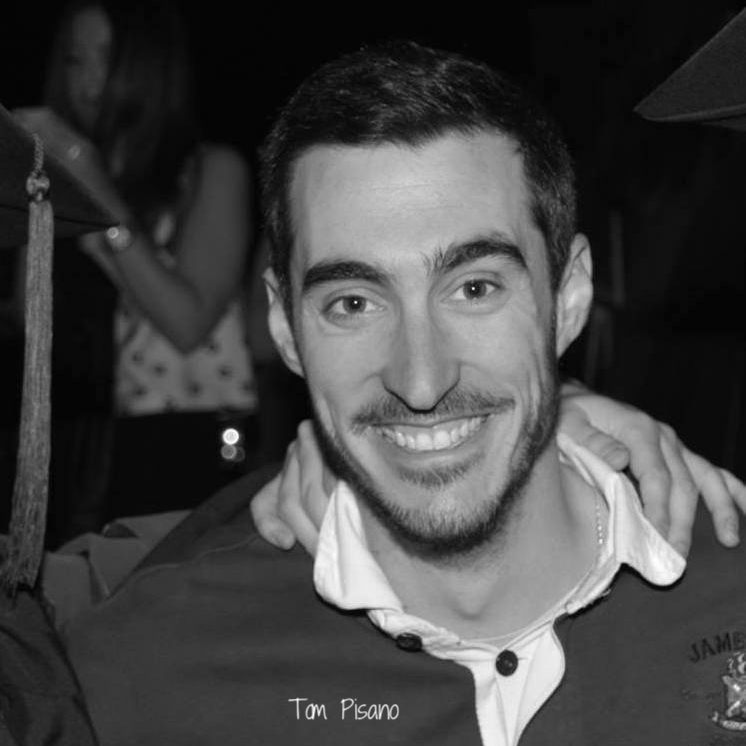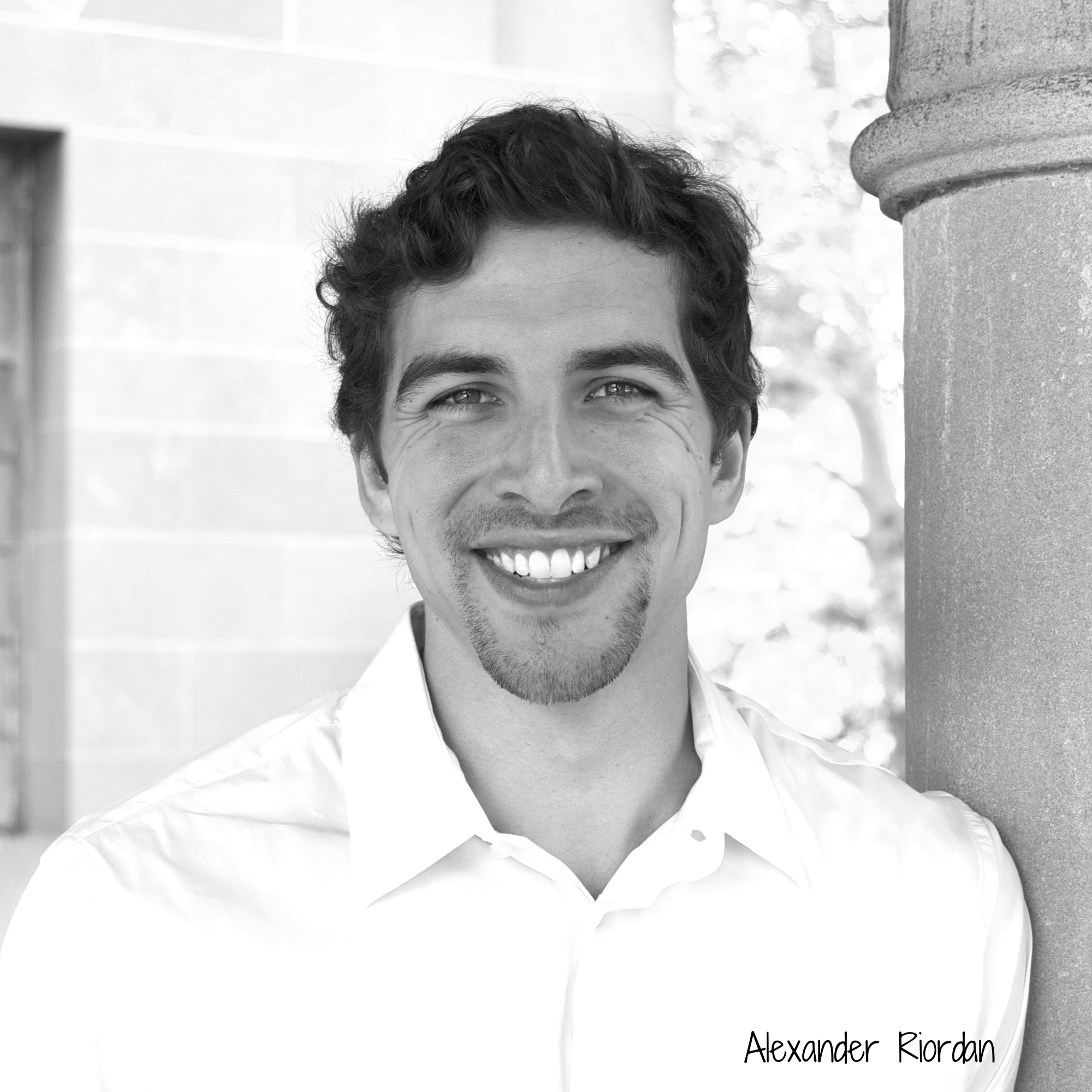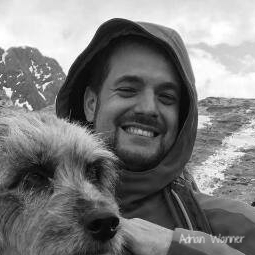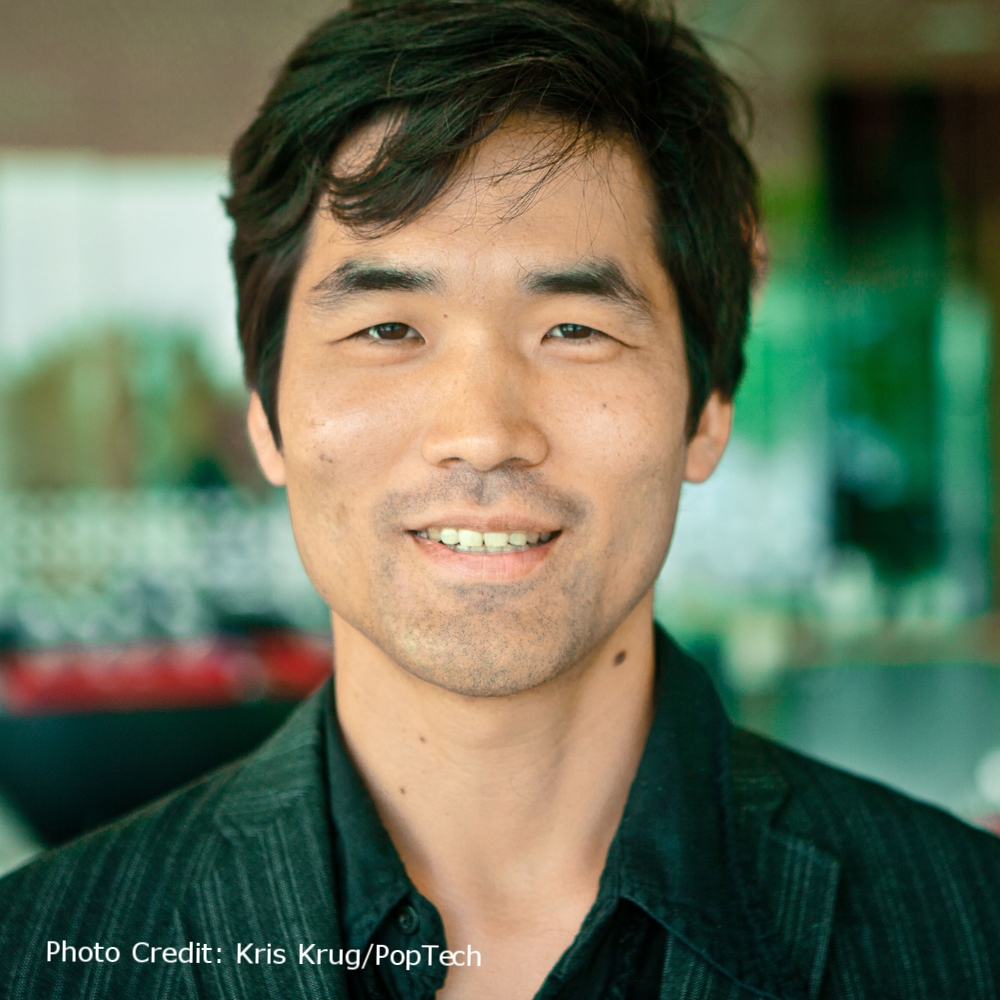Carlos Brody
Carlos Brody did his Ph.D. in Computation and Neural Systems at Caltech, in John Hopfield’s group, then did a computational postdoc in Ranulfo Romo’s monkey neurophysiology lab in Mexico (which is Carlos’ country of origin). After a short second postdoc at NYU with Tony Movshon, he began his first faculty position at Cold Spring Harbor Laboratory, where he led a computational group until the allure of exploring cognitive processing in rodents led him to start doing experiments. He moved to Princeton in 2007, and since 2008 has been an Investigator of the Howard Hughes Medical Institute. His group combines high-throughput behavior, electrophysiological recordings, optogenetic perturbations, and computational modeling to understand the neural circuit mechanisms that underlie cognitive processing.
Mark S. Goldman
Mark Goldman received a Ph.D. in physics from Harvard University in 2000 and did his postdoctoral work in theoretical neuroscience at the Massachusetts Institute of Technology. He is currently the Joel Keizer Chair in Theoretical and Computational Biology at UC Davis and an HHMI Professor. Dr. Goldman’s research uses mathematical modeling and computer simulations to address the cellular, synaptic and circuit mechanisms underlying a wide range of neurobiological functions including short-term memory storage, sensory processing, and motor control. Of particular relevance to the BRAIN COGS project, a large set of his work has focused upon mechanisms by which “neural integrator” circuits can temporally accumulate signals into a short-term memory buffer. Dr. Goldman is a recent co-director of the Marine Biological Laboratory’s Methods in Computational Neuroscience Course (2013–2017).
Jonathan Pillow
Jonathan attended the University of Arizona, where he studied mathematics and philosophy, then spent a year as U.S. Fulbright fellow in Morocco before attending graduate school at NYU, where he received a Ph.D. in neuroscience working with Eero Simoncelli on statistical models of spike trains. He moved to London for a postdoctoral fellowship at the Gatsby Computational Neuroscience Unit at UCL, and in 2009 became an assistant professor at the University of Texas at Austin in the department of Psychology. In 2014, Jonathan moved to Princeton, where he is currently an associate professor in the Princeton Neuroscience Institute, Psychology department, and the Center for Statistics and Machine Learning. Jonathan's current research sits at the border between neuroscience and statistical machine learning, focusing on computational and statistical methods for understanding how large populations of neurons transmit and process information.
Sebastian Seung
Sebastian Seung is Anthony B. Evnin Professor in the Neuroscience Institute and Computer Science Department at Princeton University. Seung has done influential research in both computer science and neuroscience. Over the past decade, he helped pioneer the new field of connectomics, applying deep learning and crowdsourcing to reconstruct neural circuits from electron microscopic images. His lab created EyeWire.org, a site that has recruited over 250,000 players from 150 countries to a game to map neural connections. His book Connectome: How the Brain's Wiring Makes Us Who We Are was chosen by the Wall Street Journal as Top Ten Nonfiction of 2012. Before joining the Princeton faculty in 2014, Seung studied at Harvard University, worked at Bell Laboratories, and taught at the Massachusetts Institute of Technology. He is External Member of the
Max Planck Society, and winner of the 2008 Ho-Am Prize in Engineering.
David Tank
David W. Tank is the Henry L. Hillman professor at Princeton University and Co-Director of the Princeton Neuroscience Institute. He also directs the Bezos Center for Neural Circuit Dynamics. At the Simons Foundation, he is the Director of the Simons Collaboration on the Global Brain. His research interests include the measurement, analysis, and modeling of neural circuit dynamics. At Bell Laboratories he contributed to the development of attractor network models of neural decision-making, the development of functional MRI imaging, and the development of cellular resolution optical imaging of neural dynamics. More recently, his work has focused on the mechanisms of persistent neural activity and the development and application of rodent virtual reality systems combined with large-scale optical recording and electrophysiology to study neural circuit dynamics during navigation and decision making.
Sam Wang
Sam Wang is professor of molecular biology and neuroscience at Princeton University. His work focuses on the neurobiology of learning, at levels ranging from single synapses to the whole brain. Dr. Wang’s research places special emphasis on the cerebellum, a brain region generally associated with the coordination of muscle movements. He is particularly curious about the cerebellum’s role in cognition and social thought processes, and he is using neural imaging of this part of the brain to search for clues to the causes of autism, a major concern of his laboratory.
Ilana Witten
Ilana graduated from Princeton University with an A.B. in Physics in 2002, and received her Ph.D. in Neurosciences from Eric Knudsen‘s lab at Stanford University in 2008, while also collaborating with Haim Sompolinsky. She subsequently completed a postdoctoral fellowship in Karl Deisseroth‘s lab in the Department of Bioengineering at Stanford. Since 2012, she has been a faculty member in the Neuroscience Institute and Department of Psychology at Princeton University. Her lab studies the neural circuits for reward learning and decision making, with a focus on the role of dynamics and feedback.
Scott Bolkan
After obtaining his bachelor’s degree in Human Biology with a concentration in Neuroscience at Stanford University, Dr. Bolkan went on to complete a PhD in Neurobiology and Behavior at Columbia University in 2017. Working in the laboratories of Dr. Joshua Gordon and Dr. Christoph Kellendonk, he investigated how reciprocal circuitry interconnecting the mediodorsal thalamus and prefrontal cortex supports component processes of spatial working memory and other
cognitive behaviors in mice. In 2017 he began post-doctoral research in the lab of Dr. Ilana Witten at the Princeton Neuroscience Institute where he is investigating the striatal substrates supporting working memory guided decision-making. Dr. Bolkan’s core research interest is to understand how local and distributed neural circuits contribute to component operations mediating cognitive behaviors. Towards this goal his work employs a variety of of tools for directly measuring and
manipulating neural activity in genetically defined neural populations, as well as computational techniques for the analysis of neural dynamics.
Brian DePasquale
Dr. DePasquale received a BS in physics from Fordham University in 2005 and a PhD in neurobiology and behavior from Columbia University in 2016 as a NSF Fellow. Under the tutelage of Dr. Larry Abbott, during his PhD he developed algorithms for training artificial neural networks and used these models to describe how populations of neurons can give rise to low-dimensional activity patterns for performing computations. He began his postdoctoral research at the Princeton Neuroscience Institute in 2016 in the labs of Dr. Carlos Brody and Dr. Jonathan Pillow. Broadly, his research focuses on the development and use of mathematical models to describe the relationship between neural activity and behavior.
Ben Deverett
Ben studied neuroscience, computer science, and music at McGill University for his undergraduate degree. He has worked in research on glioblastoma, touch-screen user interfaces, and Bayesian models of causal learning. He joined the MD/PhD program at Rutgers and Princeton in 2013, and he is currently pursuing a PhD in molecular biology and neuroscience. He is using two-photon calcium imaging and optogenetics to study the role of the cerebellum in perceptual decision-making.
Ben Engelhard
Dr. Engelhard obtained his bachelor degree from the Technion - Israel Institute of technology, Haifa, Israel. He then joined the lab of Prof. Eilon Vaadia in The Hebrew University of Jerusalem, where he got his PhD in computational neuroscience in 2015. During his PhD, Dr. Engelhard investigated cortical dynamics during Brain-Machine –Interface learning, as well as the relationship between oscillatory activity, single-neuron synchrony, and behavior. He moved to the Princeton Neuroscience Institute in 2015 for his post-doctoral research in the laboratories of Dr. David Tank and Dr. Ilana Witten. Dr. Engelhard is interested in the behavioral role of different subcortical neural systems, and in particular in the role of midbrain Dopamine neurons in complex behavior. He uses cell type specific, cellular-resolution deep-brain imaging techniques in mice performing a navigation-based, accumulation of evidence decision-making task.
Mark Ioffe
Dr. Ioffe received his Ph.D. in Physics from Princeton in 2017, working with Profs. Michael J. Berry II and William Bialek. His research used a mixture of experimental and computational methods to probe adaptation in the neural coding of populations of retinal ganglion cells. He started his postdoctoral work at the Princeton Neuroscience Institute in the Spring of 2017, working with Profs. David Tank and Carlos Brody. His current focus is on optical methods for experimental neuroscience, with the goal of applying these methods to perturb neural dynamics in behaving animals.
Sue Ann Koay
Dr. Koay received Bachelor degrees in Physics and Computer Science from San Jose State University. She then pursued a PhD. in Physics at the University of California, Santa Barbara, initially in string theory and later in experimental high energy physics with the group of Dr. Joseph Incandela. She worked on a variety of research projects at the Large Hadron Collider, CERN (CMS experiment) centered around the search for dark matter, ranging from technical developments for event triggering and particle reconstructions, to background estimations and simplified frameworks for theories of Supersymmetry. Upon graduation she received a postdoctoral Dicke Fellowship from the Department of Physics at Princeton University, during which she transitioned to the field of Neuroscience. She has since worked in the laboratories of Dr. David Tank and Dr. Carlos Brody at the Princeton Neuroscience Institute in studying working memory using a mouse animal model. Dr. Koay’s interests are in the confluence of experiment and theory and what this may tell us about principles of operation of the brain.
Edward H. Nieh
Dr. Nieh received his Bachelor’s and Master’s degrees in Bioengineering from the University of Pennsylvania, working with Dr. Brian Litt on automated seizure detection using machine learning in 2010. From there, he joined Dr. Kay Tye’s lab at the Massachusetts Institute of Technology, where he obtained his PhD in Neuroscience in 2016. His work centered around mapping the neural circuits
between the lateral hypothalamus and ventral tegmental area and their roles in controlling motivated behaviors such as feeding and social interaction. He joined Dr. David Tank’s and Dr. Carlos Brody’s labs for his postdoctoral work in the Fall of 2016, where he is now studying how CA1 neurons in the hippocampus form sequences during an evidence accumulation and decision making task.
Marlies Oostland
Dr. Oostland completed a Master’s degree in Neuroscience at the University of Amsterdam (the Netherlands), which included a research project at the University of Cambridge (UK). During her subsequent doctoral training at the University of Amsterdam, she studied the role of serotonin in postnatal development of the cerebellum. She then moved to the University of Edinburgh (UK) for postdoctoral research in the laboratories of Prof. Matt Nolan and Prof. Ian Duguid, where she performed in vivo whole-cell patch clamp recordings in awake behaving mice to study the role of HCN1 channels in the inferior olive. In another project, she used silicon probes to record place cells from mice performing a behavioral task in a virtual reality environment. In January 2018, Dr. Oostland joined the lab of Prof. Sam Wang at the Princeton Neuroscience Institute. She is now combining her expertise of in vivo electrophysiology with his lab's expertise in cognitive function of the cerebellum. She is studying the neuronal computations in the cerebellum underlying the cognitive process of decision making, using behavioral paradigms developed in the Wang lab.
Lucas Pinto
Dr. Pinto obtained his medical degree from the Federal University of Minas Gerais, Brazil, in 2006. He then did a Master's degree in physiology at the same university, where he studied visual processing in owls with Jerome Baron. Dr. Pinto got his PhD in neuroscience from the University of California, Berkeley in 2014, working in in Yang Dan's laboratory. He investigated how circuits downstream of the sensory cortex participate in perceptual decision-making. He moved to the Princeton Neuroscience Institute in 2015 for his post-doctoral research in the laboratories of Dr. David Tank and Dr. Carlos Brody. Dr. Pinto is broadly interested in neural mechanisms underlying cognition, both at the local circuit level and in terms of large-scale interactions between different brain areas. He uses a combination of recording, perturbation and computational techniques to study decision-making behavior.
Tom Pisano
Tom Pisano is an M.D./Ph.D. student and a NIH Ruth L. Kirschstein Predoctoral Fellow in the Wang Lab. His research concerns the long distance connectivity of the posterior cerebellum. His research uses a combination of viral tracers, computational neuroanatomy, machine learning and whole brain clearing techniques to look at the topographical organization of cerebellar connections to the rest of the brain. His interests include cerebello-thalamo-cortical connections and the cerebellum's contribution to non-motor behavior.
Alexander Riordan
Alexander Riordan is a Ph.D. candidate in the Tank Lab, whose goal is to understand how neuronal interactions produce activity patterns underlying cognition. His approach shifts from computation to experiment as needed. Currently he is combining imaging technologies to test circuit models of memory and navigation. Previously, he has co-developed machine learning methods for cell detection in collaboration with Sebastian Seung, circuit models of cognitive flexibility with Carlos Brody, and nonlinear dynamical models of odor-tracking with Nathan Urban and Bard Ermentrout. His experimental work with Jan Thornton explored therapeutic roles of hormones in schizophrenia. Riordan received a bachelor's degree in mathematics from Oberlin College, and a master’s in neuroscience from Princeton University.
Manuel Schottdorf
Dr. Schottdorf completed his undergraduate education in physics and philosophy at the University of Würzburg in Germany, supported by a Max Weber scholarship run by the German Academic Scholarship Foundation. He then obtained two Master degrees, one in 2011, working in condensed matter physics from Rutgers University, and one in 2013, working in theoretical neuroscience in Göttingen. In 2018, he completed his PhD research in the labs of Fred Wolf at the Max Planck Institute for Dynamics and Self-Organization and Walter Stühmer at the Max Planck Institute for Experimental Medicine. For his work on the reconstitution of visual cortical feature selectivity, he was selected as a recipient of a Boehringer Ingelheim Fonds PhD Fellowship, and won the Otto Hahn medal of the Max Planck Society. Dr. Schottdorf moved to the Princeton Neuroscience institute in 2018 to study the neuronal basis of cognition.
Adrian Wanner
After completing his undergraduate studies in Interdisciplinary Sciences with majors in theoretical physics and neuroinformatics at ETH Zurich, Switzerland, Adrian joined the labs of Prof. Dr. Richard Hahnloser, at ETH Zurich, and Prof. Dr. Tatyana Sharpee, at the Salk Institute in La Jolla, California, to work on new algorithms for estimating receptive fields of neurons in the visual cortex of macaque monkeys and the auditory system of zebrafinches. In the course of his doctoral work on the olfactory system of zebrafish in the lab of Prof. Dr. Rainer Friedrich at the Friedrich Miescher Institute for Biomedical Research in Basel, Switzerland, Adrian became an expert in multiphoton calcium imaging and large-scale electron microscopy-based circuit reconstruction. In September 2017, Adrian was awarded the C.V. Starr Fellowship at Princeton University to study the neuronal basis of working memory in mice, in collaboration with Prof. Dr. Sebastian Seung and Prof. Dr. David Tank.
Alumni
Benjamin Scott
Dr. Scott is an Assistant Professor in the Department of Psychological and Brain Sciences at Boston University. He received his BA from the University of Chicago and his Ph.D. from the Massachusetts Institute of Technology where he was named a Poitras Fellow in Biomedical Engineering. He did postdoctoral research at Princeton University in the laboratories of Drs. David Tank and Carlos Brody. Dr. Scott’s research sits at the interface between biology and neuroscience, and a consistent theme in his work has been the development of new tools for imaging structure and function in the intact nervous system. Examples of his past accomplishments include the generation of techniques for genetic modification in birds, the discovery of a unique form of cell migration in the adult brain, and the development of a system that trains rodents to dock to a two-photon microscope, facilitating in vivo, functional imaging during complex learned behaviors. www.scottcognitionlab.com
Project Manager
Brigitte Stark
Brigitte Stark received her master’s in human genetics from the Johannes Gutenberg University in Mainz, Germany, where she completed her thesis on Hodgkin's lymphoma. She also holds a degree in science journalism from Virginia Commonwealth University. After moving to Princeton in 1996, she worked for the Institute for Advanced Study as a newsletter editor and taught German for many years. Before joining BrainCOGS, Brigitte managed the office of SCIENION, a German medical engineering start-up. Now she combines her organizational talent and passion for science to support all the researchers on her team.


